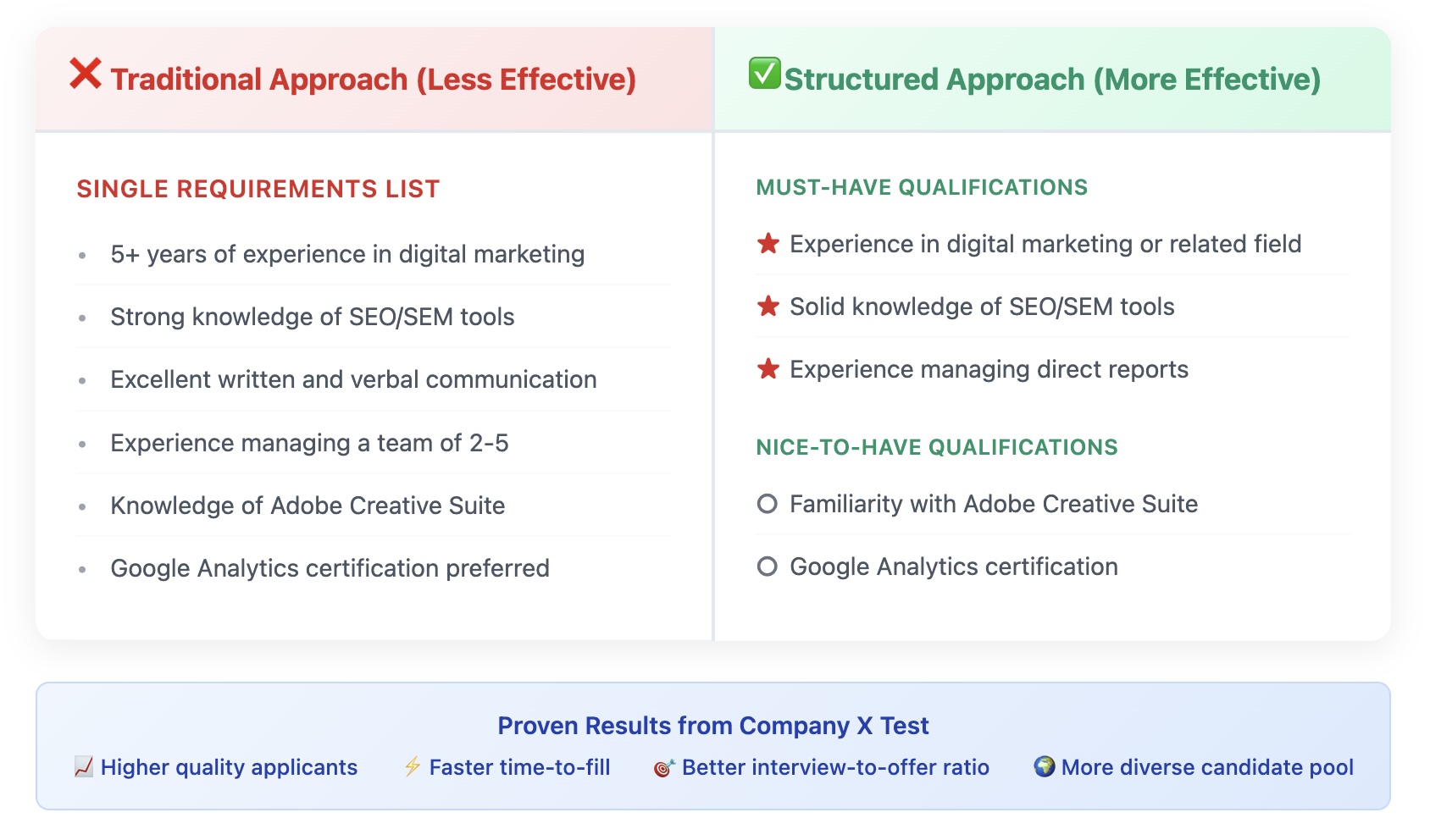Panel interviews can feel overwhelming for job candidates. One moment they’re having a normal conversation, and the next, they’re fielding questions from three different people while trying to remember everyone’s names and job titles.
But here’s the thing: panel interviews don’t have to be intimidating or chaotic. When done right, they’re actually one of the most effective ways to evaluate candidates and make hiring decisions.The problem is that many organizations jump into panel interviews without much planning. They throw a few people in a room, hope for the best, and wonder why the process feels disjointed. Meanwhile, candidates leave feeling confused about what just happened.
This post will walk you through everything you need to know to make panel interviews work better for everyone involved. Whether you’re conducting them or preparing for one as a candidate, these practical tips will help you get the most out of the experience.
Why Panel Interviews Matter
Panel interviews serve a specific purpose that one-on-one interviews can’t match. They’re designed to give you a fuller picture of a candidate by bringing together different viewpoints and expertise. Think about it: when you hire someone, they’ll be working with multiple people, not just their direct manager. A panel interview simulates that dynamic and shows how well someone can handle input from various sources.
The benefits are clear. You get diverse perspectives on the same candidate, which helps you spot strengths and concerns you might miss in a solo interview. Different panel members can focus on different aspects—one person might evaluate technical skills while another assesses cultural fit.
Panel interviews also help level the playing field. It’s harder for unconscious bias to creep in when multiple people are making the assessment. Plus, they’re efficient. Instead of scheduling separate meetings with four different people, you can get everyone’s input in one session. But these benefits only show up when panel interviews are executed well. Without proper planning, they can become overwhelming for candidates and frustrating for interviewers. Some panels turn into interrogations, while others lack focus and waste everyone’s time.
Setting Up Your Panel for Success
The foundation of a good panel interview happens before anyone walks into the room. It starts with assembling the right team and giving them clear direction.
Building Your Panel Team
Your panel should represent the different perspectives that matter for the role. If you’re hiring a marketing manager, you might include someone from the marketing team, a person from sales, and someone from the leadership team. Each person brings a different lens to the evaluation.
Aim for three to four people maximum. Any more than that, and you risk overwhelming the candidate. Any fewer, and you lose the main advantage of having multiple viewpoints. Make sure your panel members actually want to be there. Someone who’s just going through the motions won’t contribute much and might even detract from the experience.
Defining Roles and Responsibilities
Once you have your team, assign specific focus areas to each person. Maybe one person leads the technical questions, another explores problem-solving abilities, and a third person focuses on team dynamics and culture fit. This doesn’t mean each person can only ask about their assigned area, but it ensures you cover all the important ground without too much overlap.
Create a structured plan with a clear agenda. Decide who will ask which questions and roughly how much time you’ll spend on each topic. Share this plan with your panel members ahead of time so everyone knows what to expect.
Preparing Your Team
Not everyone is naturally good at interviewing, so spend some time preparing your panel members. Review the job requirements together and discuss what you’re looking for in an ideal candidate.
Review effective questioning techniques. Open-ended questions usually work better than yes-or-no questions. Also discuss the importance of letting candidates finish their responses and building on each other’s questions rather than jumping to completely unrelated topics.
Making Candidates Feel Welcome
Panel interviews can be nerve-wracking for candidates, so do what you can to set them up for success. This effort starts with clear communication before the interview. Let candidates know they’ll be meeting with a panel, who will be there, and what each person’s role is. Share the general format and timeline so they know what to expect. This transparency helps reduce anxiety and allows candidates to prepare more effectively.
During the interview, start with proper introductions. Have each panel member introduce themselves, explain their role in the organization, and briefly mention what they’ll be focusing on during the interview. This helps candidates understand the context for different questions. Create a welcoming atmosphere from the start.
Conducting the Interview
The actual interview requires coordination and awareness from everyone involved. As the interview progresses, pay attention to the overall dynamic and make adjustments as needed.
Avoid rapid-fire questioning where different panel members jump in with unrelated questions. Instead, let conversations develop naturally. If one person asks about a project the candidate worked on, others can build on that topic before moving to something new.
Watch for signs that the candidate is feeling overwhelmed. If they seem confused or stressed, slow down and give them space to think. Remember, you want to see their best performance, not how they handle unnecessary pressure. Take strategic notes, but don’t spend the whole time writing. Focus on key insights and specific examples rather than trying to capture every word. You’ll have time to compare notes with your team afterward.
After the Interview
The work doesn’t end when the candidate leaves the room. What happens next is crucial for making good hiring decisions and maintaining a positive candidate experience.
Team Debriefing
Schedule a debrief session immediately after the interview while everyone’s impressions are fresh. Start by having each person share their overall thoughts, then dive into specific areas. Use a structured approach to evaluate candidates. Create a simple scoring system based on the key criteria for the role. This helps ensure you’re making decisions based on relevant factors rather than who was most memorable.
Be honest about concerns, but also make sure you’re distinguishing between personal preferences and job-relevant issues. Someone might have a different communication style than you’re used to, but that doesn’t necessarily make them a poor fit.
Following Up
Regardless of your decision, provide thoughtful feedback to candidates who went through a panel interview. They invested significant time and energy in the process, and constructive feedback helps them improve for future opportunities.
Panel interviews can be incredibly effective when done thoughtfully. They provide richer insights than solo interviews and help ensure you’re making well-rounded hiring decisions. The key is preparation, clear communication, and keeping the candidate experience front and mind.
Making Panel Interviews Work for Everyone
Panel interviews don’t have to be stressful ordeals. With proper planning and clear communication, they become valuable tools for making better hiring decisions while giving candidates a genuine sense of what it’s like to work with your team. The most successful panel interviews feel more like collaborative conversations than formal interrogations. They give candidates a realistic preview of the team dynamic while helping you assess how someone might actually perform in the role.
Start implementing these practices in your next panel interview. Focus on preparation, clear roles, and creating a welcoming environment. Your candidates will appreciate the thoughtful approach, and you’ll get better insights to make confident hiring decisions.
Interviewing is easier with ApplicantStack, a platform designed to streamline the hiring and onboarding process. Explore how you can get everyone on the same page with a robust tool that simplifies your recruiting efforts.











